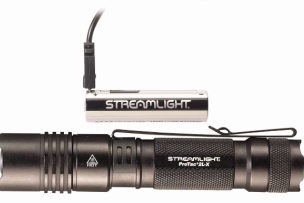And that doesn't take into consideration workers who don’t own smartphones or tablets and would be unable to download apps that interact with digital locks unless their employer provided the devices.
In essence, the technology to digitize lockout/tagout systems exists but it hasn’t yet evolved to the point that it’s easily accessible to all the factory and machine shop workers who might need it—or even available without interruption throughout their workplaces. Because digital LOTO systems may not be a good fit for every manufacturing location, Master Lock offers other safety products and services to help associates stay safe, like Bluetooth-enabled locks and eLOTO software.
What Does Digital Lockout Mean Today?
So far, those obstacles have limited the digitization of physical lockout/tagout routines required for high-energy equipment by the federal Occupational Safety and Health Administration, but not the recordkeeping and other paperwork that goes along with them.
Many companies have begun developing and storing lockout/tagout policies digitally, enabling workers to access them while working directly with equipment on the factory floor rather than walking to an office to search through desks and file cabinets for printed manuals.
Master Lock’s subscription-based eLOTO software, which includes an online database of lockout/tagout procedures as well as two mobile apps—one for policy writers and one for inspectors—helps customers run safety audits and keep logs of physical lockouts.
Designers solved the problem of internet connectivity gaps by building the apps to work offline if necessary, so that collected data including photos may be uploaded later.
Read more: Lockout Safety Procedures: 5 Elements Critical To Success
Regulators are beginning to leverage technology, too. The Texas Division of Workers’ Compensation, for instance, utilizes a digital Energy Control Procedure Form for high-energy equipment that safety officers can either print or store electronically.
Another innovation that’s gaining traction is the use of RFID (radio frequency identification) tags that function somewhat like QR codes but rely on radio waves rather than images.
Amping Up Digital Lockout Capabilities
The catch is that those systems require a smart device such as a phone or tablet for on-the-spot access, so a physical copy of the LOTO procedure should still be made available at the machine. Companies, for the most part, are disinclined to pick up the tab for providing smart devices to every employee.
Read more: Lockout/Tagout Procedure Tips: Authorized vs. Affected Employees
While the cost of the devices themselves is a pivotal consideration, others include the risk of increasing worker distraction by encouraging device use or, in higher-risk environments such as oil refineries or chemical plants, the possibility of an accidental energy release from a non-intrinsically safe device.
Bluetooth Locks
As a result, machine shops, factories and other businesses required to use lockout/tagout procedures are exercising caution about introducing digital equipment into areas where personal safety is on the line, though some padlocks and machine guards are making their way onto the market.
Master Lock's Bluetooth padlocks, which include devices such as the 4401LHEC, can be used to control access to worksites or specific points inside them.
The advantage of Bluetooth technology is that it relies on proximity for signal transmission, so when the user is close enough to the lock, it can be accessed regardless of wireless internet connectivity.
What makes such padlocks attractive isn’t just the simplicity of being able to unlock them with a phone and not having to carry keys around. When they're used correctly, the customer has a record of who opened a particular lock, what time they opened it, what time they closed it and where.
Chemical companies, for instance, could track who opened a storage tank and when, while other companies such as machine shops could give an HVAC technician limited access for after-hours repairs.
The device's added value, in short, is access management.
MSC can help you create a safer workplace to keep your team protected from electrical hazards. For a FREE assessment, training, programs and products to keep safe, visit mscdirect.com.
What steps have you taken to digitize lockout/tagout procedures? Tell us in the comments below.





Talk to Us!
May I know the cost of introducing the digital LOTO
83I am a retired electrical power engineer, a registered PE, having served half of my 35+ year career working in electrical utilities and the other half as a consultant. My career has been a rewarding one and left feeling that I have made a difference. LOTO procedures in electric utility power plants, distribution, and transmission power substation facilities, and manufacturing plants, using the "old school" physical mechanical padlocks, hold tags, and logging have served these industries well, as other industries, successfully for many decades.
Bringing a digitized method into mechanical LOTO procedures I believe would be hard pressed in avoiding accidents, injury, and deaths. Mechanical interlocks, padlocks, keys, hold tags or cards, etc. has proven themselves. Going to a digitized world for LOTO procedures should be approached and scrutinized very carefully by those who attempt to use them.
92Wireless digital communications protocols such as Bluetooth , WiFi and LTE are based upon a "best effort" philosophy toward signal integrity. For life safety systems such as tag out, lock out this would be a dangerous path. I got to see a n old school lock out tag out system at a particle accelerator. Keys that proved employees access to the beam line are stored in a panel board matrix of key switches.removing a key from the panel board interrupts a safety circuit, until all workers return their keys, the system cannot be energized. It is simple and effective. Why complicate this with a dangerously complex system, ?
82The risk potential as mentioned by Ron S. and J. Leikhim as mentioned above is in place for sure but realistically we all know Digital LOTO will be coming into our workplaces sooner or later. The optimal control will probably be a combination of both hardware and digital solutions. The important thing here is to address the "possible digital risks" and find practical solutions to prevent inadvertent energization and/or unintended activation of digital locks.
74Leave a reply
Your email address will not be published. Required fields are marked *